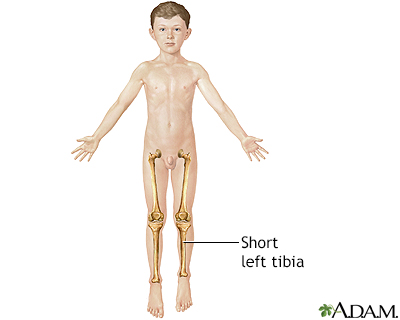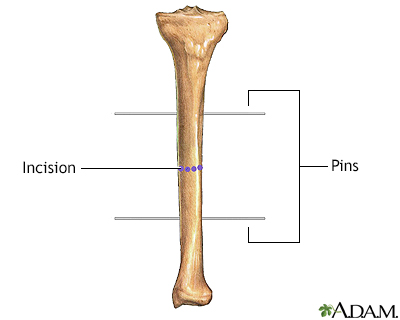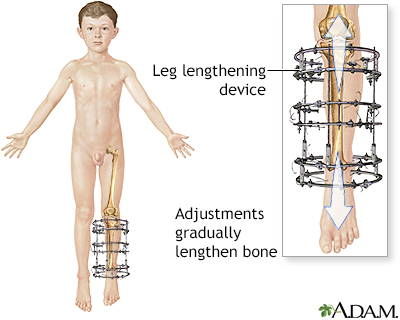Health exams for: #AGEGROUP#
The following exams, tests, and procedures are recommended for #AGEGROUPLOWER#.#FEMALETEXT#
Select a link from the list below to learn how and why each test is performed, as well how to prepare for it.

The following exams, tests, and procedures are recommended for #AGEGROUPLOWER#.#FEMALETEXT#
Select a link from the list below to learn how and why each test is performed, as well how to prepare for it.



The most common bones treated with lengthening procedures are the bones of the leg, the tibia and the femur. Surgical treatment may be recommended for severe unequal leg lengths caused by; Poliomyelitis and cerebral palsy; Small, weak (atrophied) muscles or short, tight (spastic) muscles may cause deformities and prevent normal leg growth; Hip diseases such as Legg-Perthes disease; Previous injuries or bone fractures that may stimulate excessive bone growth; Abnormal spinal curvatures (scoliosis); Birth defects (congenital deformities) of bones, joints, muscles, tendons, or ligaments.
The most common bones treated with lengthening procedures are the bones of the leg, the tibia and the femur. Surgical treatment may be recommended fo...
While the child is deep asleep and pain-free (using general anesthesia), the surgeons carefully study the blood vessels and blood supply to the bone. An incision is made in the bone to be lengthened; usually the lower leg bone (tibia) or upper leg bone (femur). Metal pins or screws are inserted into and through the skin and bone above and below the bone incision and the skin incision is stitched closed. A metal device (such as an Ilizarov device) is attached to the screws in the bone and will be used later to gradually crank the cut bone apart, creating a space between the ends of the cut bone, which heals to form new bone. The lengthening device is used very gradually, lengthening the bone in extremely small steps, usually over the course of several months.
While the child is deep asleep and pain-free (using general anesthesia), the surgeons carefully study the blood vessels and blood supply to the bone....
The device used to lengthen the leg after placement of the pins usually must stay in place for many months. The leg is gradually lengthened over this time, and the patient is usually able to walk with the device in place. Multiple surgeries are usually required to effect significant lengthening of the limb.
The device used to lengthen the leg after placement of the pins usually must stay in place for many months. The leg is gradually lengthened over this...
Review Date: 12/12/2022
Reviewed By: C. Benjamin Ma, MD, Professor, Chief, Sports Medicine and Shoulder Service, UCSF Department of Orthopaedic Surgery, San Francisco, CA. Also reviewed by David C. Dugdale, MD, Medical Director, Brenda Conaway, Editorial Director, and the A.D.A.M. Editorial team.



